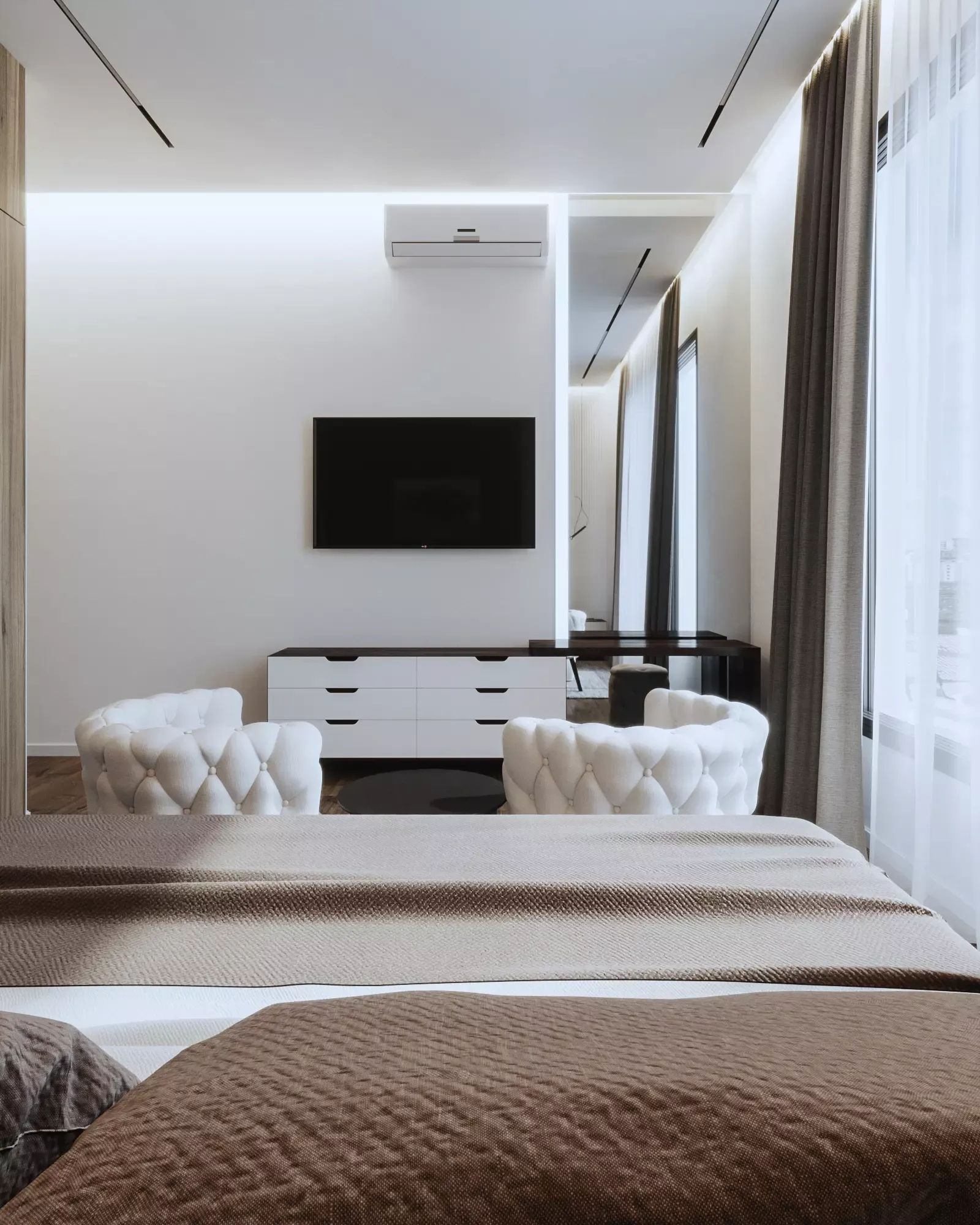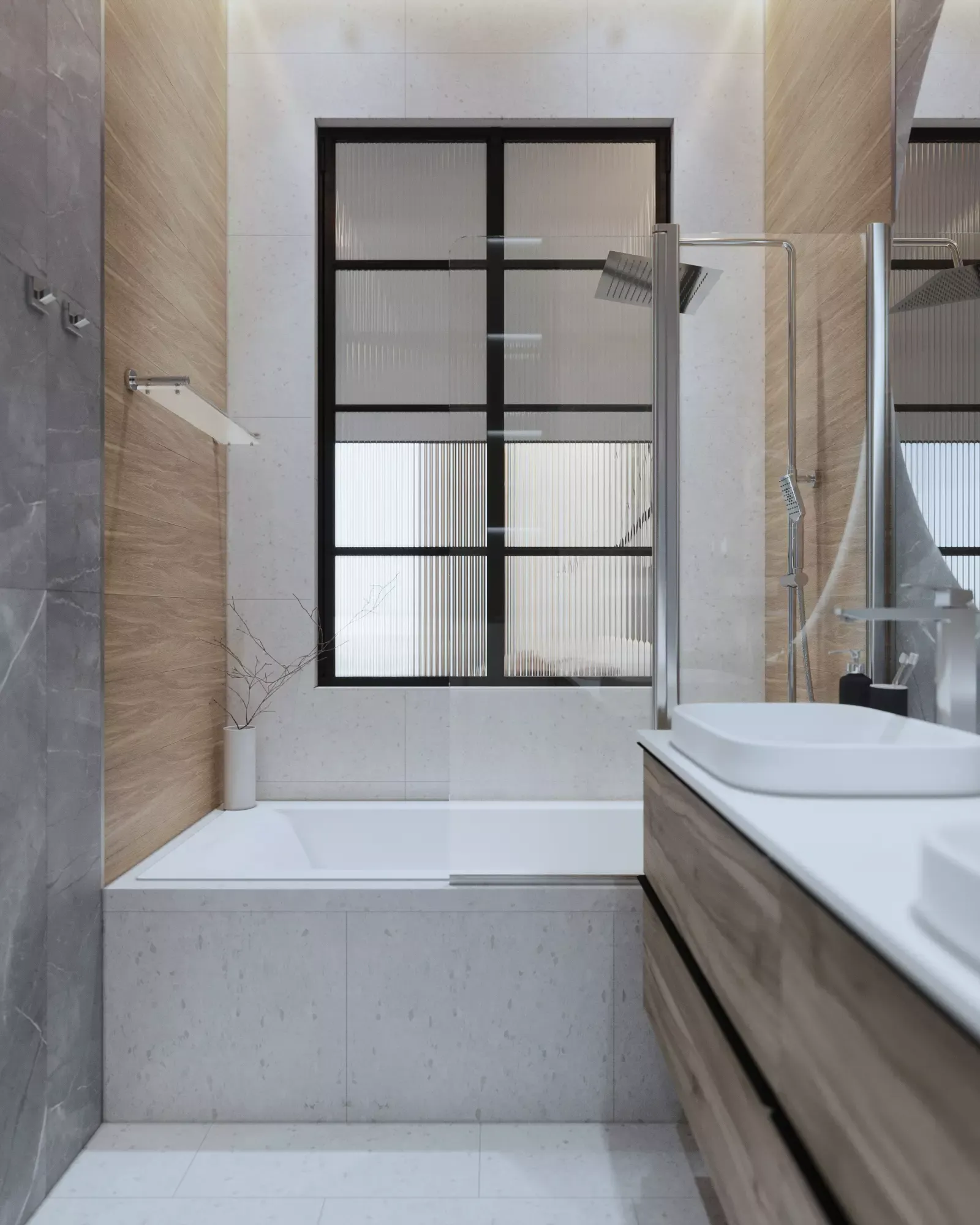Business Class Panoramic Apartment White Design
Business Class Panoramic Apartment White Design
The apartment is designed for a married couple without children. The clients intentionally declined a walk-in closet in favor of larger room areas. Built-in wardrobes are installed in each room and in the entrance hall.
A glass partition has been installed between the kitchen and the living room, visually uniting these two spaces. Nevertheless, all rooms are separate in case children come or friends stay overnight.
The style of the apartment is minimalistic. The main textures and colors include white, gray microcement on the accent wall, gray marble in wet areas, terrazzo flooring in the hallway, and wood in the furniture.
All objects and textures in the project are real furniture models and materials that can be found in stores. For example, the tiles in the bathroom and toilet are from Ceramica Marazzi (forest dark brown, butterfly white, Windsor dark, light gray terrazzo). In the illustration of the kitchen project, you can see an Ikea table and TON chairs.
The aesthetics of minimalism are characterized by simplicity, cleanliness, and functionality. Its main idea is to reduce everything to the necessary minimum, eliminate the excess, and keep only what is essential.
In design, this is expressed through simple forms and lines, a minimal amount of details, and the absence of decoration. The color palette of minimalism is usually limited and includes neutral and muted colors such as white, gray, black, brown, and beige.
Minimalistic interiors usually have an open plan, large windows, smooth surfaces, and minimal furniture. Instead of excessive furniture and decor, minimalist spaces typically contain only necessary items and accents such as books, plants, or paintings.
In art, minimalism can be seen in simple forms, lines, and colors. It can be abstract art that seeks to express an idea or emotion through a minimal number of elements.
Overall, the aesthetics of minimalism is a refined and elegant style that aims to remove the unnecessary and highlight only what is essential. It can be characterized as "less is more," where each element has its place and function in the overall composition.
Minimalism emerged in different fields of art and design at different times, so its origins can be traced in various cultural contexts.
In architecture and interior design, minimalism started to develop in the early 20th century, particularly in Germany and Russia. It was a reaction to the complexity and ornateness of styles such as Baroque and Rococo that were popular at the time. One of the pioneering minimalist architects was Ludwig Mies van der Rohe in Germany, who used geometric forms, simple lines, and a minimal amount of decorative elements in his works.
In painting, minimalism emerged in the 1960s in the United States. It was associated with conceptual art and post-minimalism and distinguished itself from traditional forms of painting with its swift simplicity and purity of forms.
In literature, minimalism refers to a style that emerged in the 1960s, particularly in American literature, where authors aimed for simplicity and precision of language, minimal use of description, and removal of all unnecessary elements. Minimalism in literature is associated with "verlibr." "Verlibr" is a term that denotes a form of poetry created by the Russian poet Vladimir Mayakovsky in the 1910s. The term "verlibr" is an abbreviation of the phrase "vertical lyricism without rhyme."
Minimalism emerged as a reaction to complexity and excess in various fields of art and design, aiming to achieve simplicity, cleanliness, and functionality in its forms and elements.


















